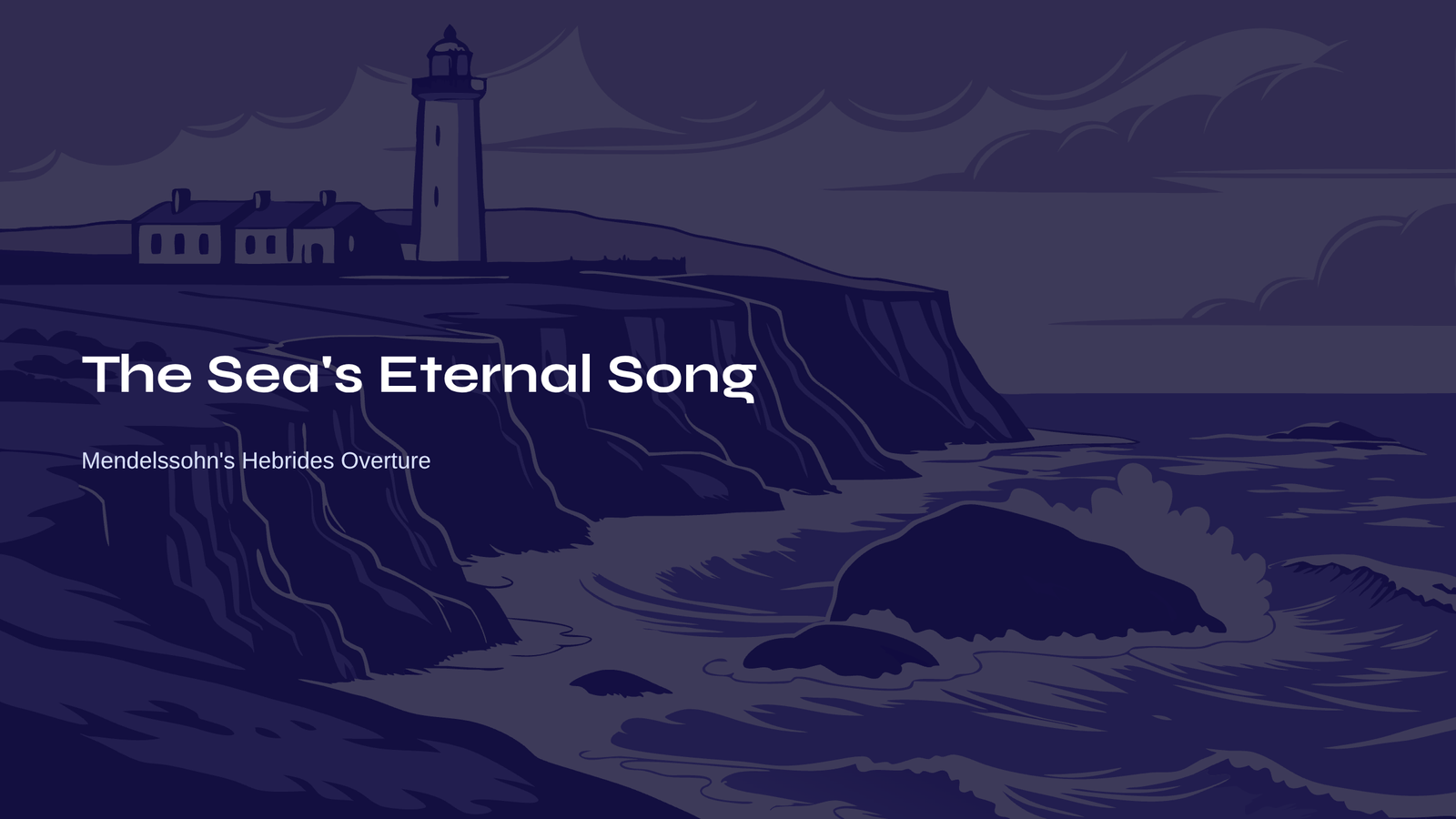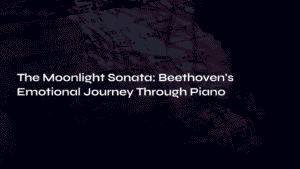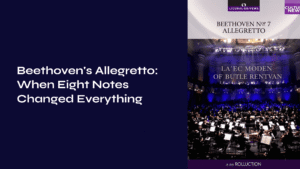Table of Contents
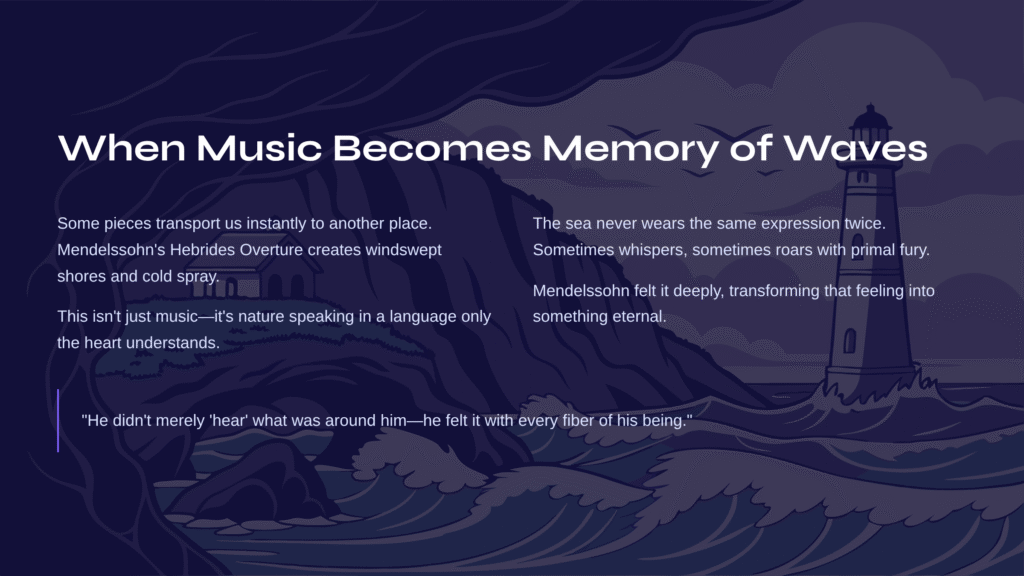
When Music Becomes Memory of Waves
Some pieces of music transport us instantly to another place. The first time I heard Mendelssohn’s Hebrides Overture, I found myself standing on some distant, windswept shore, feeling the cold spray of unknown waters against my face. From the opening notes to the final, lingering echo, this wasn’t just music—it was nature itself speaking in a language only the heart could understand.
The sea never wears the same expression twice. Sometimes it whispers secrets in gentle murmurs, other times it roars with primal fury. That Mendelssohn’s inspiration from a mysterious Scottish cave still moves us two centuries later speaks to something profound: he didn’t merely ‘hear’ what was around him—he felt it with every fiber of his being, then transformed that feeling into something eternal.
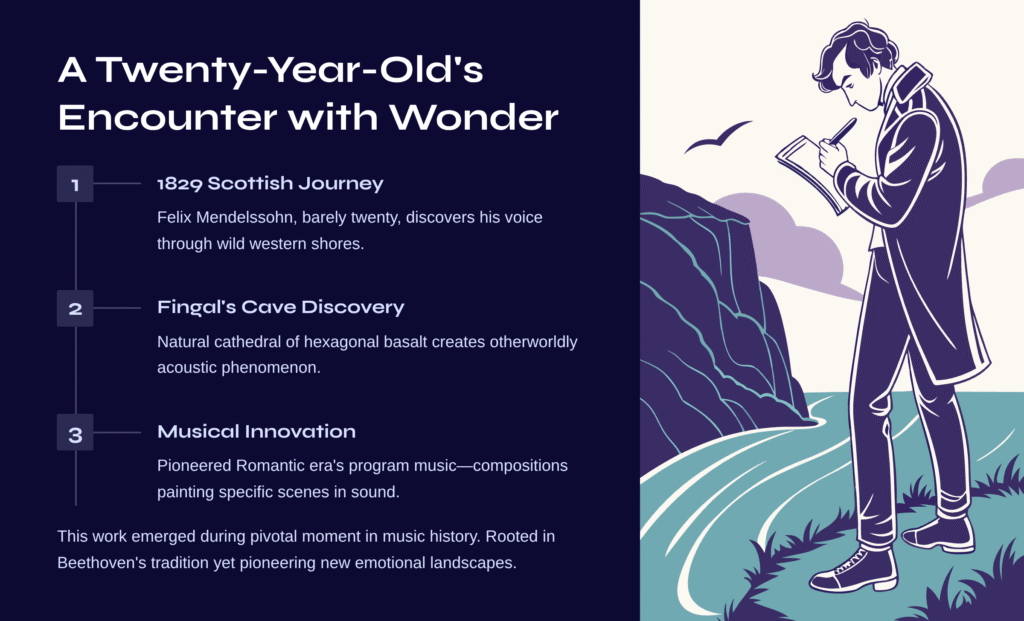
A Twenty-Year-Old’s Encounter with Wonder
When Felix Mendelssohn embarked on his Scottish journey in 1829, he was barely twenty years old. Imagine it: a young composer, already brilliant but still discovering his voice, standing before the wild western shores and the enigmatic Fingal’s Cave. The overwhelming sensation he must have felt in that moment of pure encounter with nature’s raw beauty.
Fingal’s Cave wasn’t just another tourist destination. This natural cathedral, carved from hexagonal basalt columns, created an otherworldly acoustic phenomenon as waves crashed into its depths. Mendelssohn captured his immediate response in musical sketches that would become the seeds of the Hebrides Overture.
This work emerged during a pivotal moment in music history. While rooted in Beethoven’s symphonic tradition, it pioneered the Romantic era’s fascination with program music—compositions that painted specific scenes and emotions in sound. Mendelssohn achieved what few composers manage: creating music that is both abstractly beautiful and vividly descriptive, accessible to newcomers yet sophisticated enough to reward deep listening.
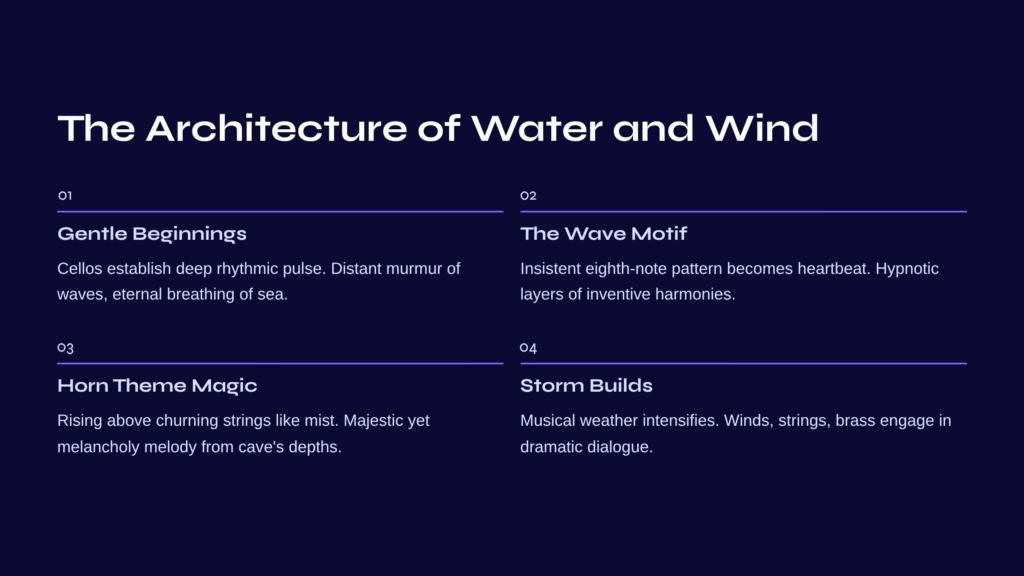
The Architecture of Water and Wind
Gentle Beginnings – First Glimpse of the Infinite
The overture opens with cellos and double basses establishing a deep, rhythmic pulse. It’s impossible not to hear the distant murmur of waves in these opening measures—not yet violent, just the eternal breathing of the sea itself. When the violas enter with their tentative melody, we’re already standing at the threshold of something mysterious and magnificent.
The Wave Motif – Beauty in Endless Repetition
As we move into the main Allegro section, the strings take up an insistent eighth-note pattern that becomes the heartbeat of the entire work. This “wave motif” could easily become monotonous in lesser hands, but Mendelssohn layers it with such inventive harmonies and counter-melodies that it becomes hypnotic rather than tedious.
The entrance of the horn theme is pure magic. Rising above the churning strings like mist above water, this lyrical melody seems to emanate from the cave’s deepest recesses. It’s both majestic and melancholy, capturing something essential about humanity’s relationship with the natural world—our simultaneous insignificance and deep connection to forces greater than ourselves.
The Storm Builds – Nature’s Power and Human Awe
As the piece progresses, the musical weather becomes increasingly turbulent. Winds and strings engage in intense dialogue, brass punctuates with dramatic fanfares, and the timpani crashes like thunder. Yet even at its most tempestuous moments, Mendelssohn maintains a poet’s sensibility. This isn’t Beethoven’s heroic struggle against fate—it’s something more contemplative, more concerned with beauty than conquest.
The climax builds not through raw volume alone but through the sophisticated interweaving of themes. The wave motif continues its relentless pulse while the horn melody soars above, creating a sonic representation of standing in a storm while remaining emotionally centered—overwhelmed by nature’s power yet somehow at peace with it.
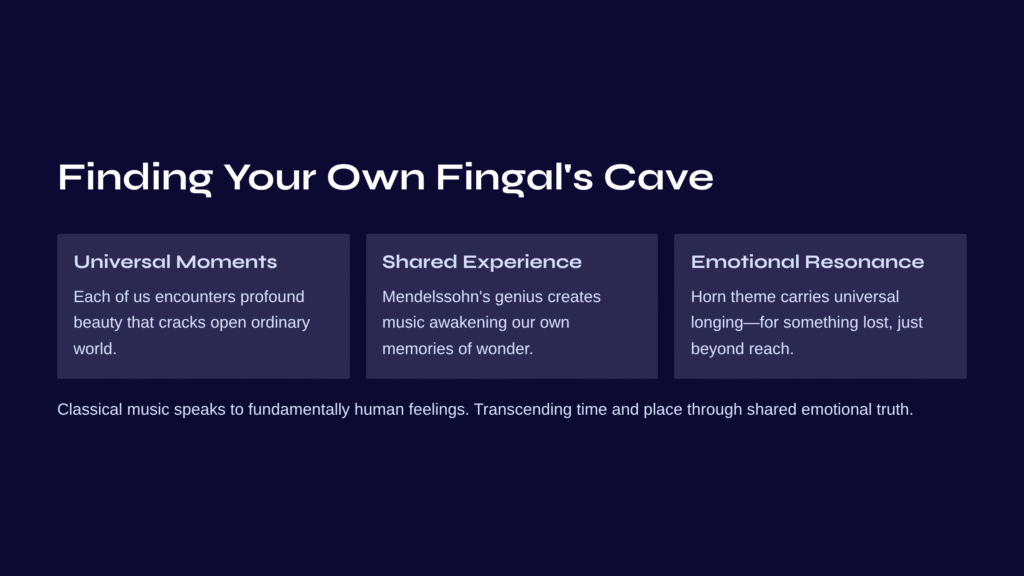
Finding Your Own Fingal’s Cave
Listening to this music, I often wonder what exactly Mendelssohn felt in that moment of inspiration. Was it simply awe at natural grandeur? Or was it something deeper—the artist’s recognition that such experiences demand to be shared, transformed into something that can touch other souls across time?
Each of us has encountered our own “Fingal’s Cave”—those moments when we’re stopped in our tracks by beauty so profound it seems to crack open the ordinary world. Perhaps it was a sunset that made time stand still, or a conversation that changed everything, or a piece of art that revealed something previously hidden about life. Mendelssohn’s genius lies in creating music that awakens those memories in us, making his nineteenth-century Scottish adventure feel intimately relevant to our own experiences.
The horn theme, in particular, seems to carry a universal longing—for something lost, something just beyond reach, something that calls to us across vast distances. This emotional resonance explains why classical music continues to move us: it speaks to feelings that are fundamentally human, transcending the specifics of time and place.
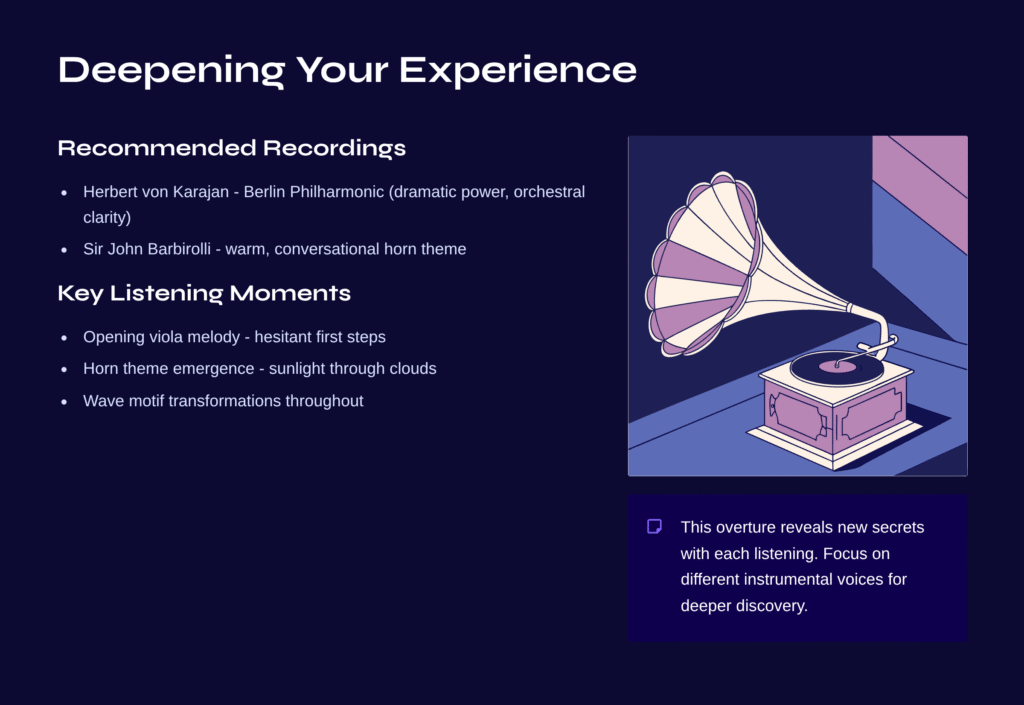
Deepening Your Experience
Choosing Your Musical Journey
For first-time listeners, I recommend Herbert von Karajan’s recording with the Berlin Philharmonic. His interpretation brings out both the work’s dramatic power and its subtle orchestral colors with remarkable clarity. If you prefer a more intimate approach, try Sir John Barbirolli’s version—his way with the horn theme is particularly moving, warm and conversational rather than heroic.
Moments to Treasure
Pay special attention to the very opening, when the viola introduces the first melodic fragment. There’s something almost hesitant about it, like a first tentative step into unknown territory. And don’t miss the horn theme’s initial appearance—that moment when the melody emerges from the orchestral texture like sunlight breaking through clouds.
The Rewards of Return
This overture reveals new secrets with each listening. Try focusing on different instrumental voices: follow the intricate conversation between woodwinds and strings, notice how Mendelssohn uses dynamics to create a sense of distance and proximity, observe how the wave motif transforms throughout the piece. Like the sea itself, this music has depths that reward patient exploration.
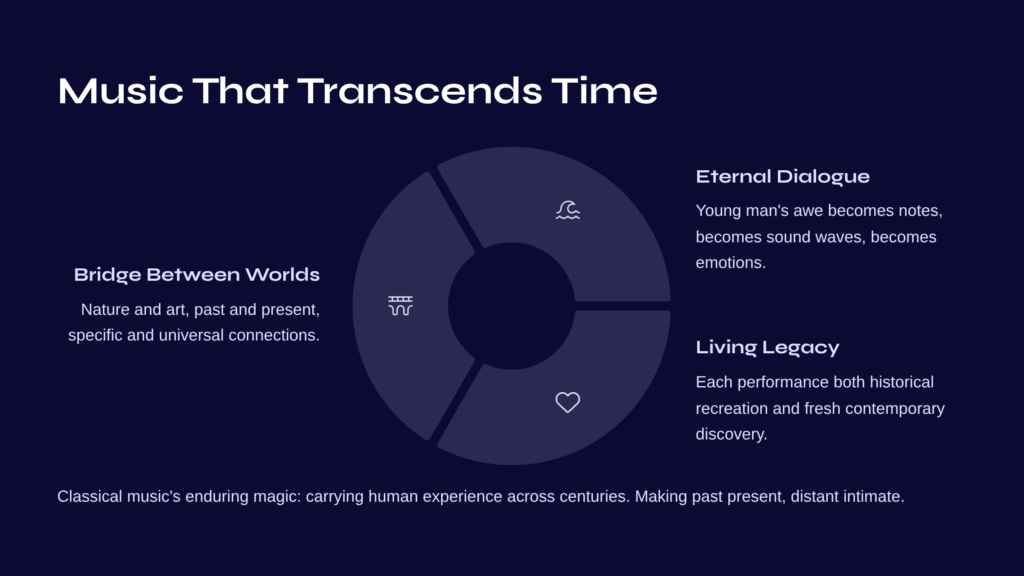
Music That Transcends Time
When the final notes fade away, we return to our everyday world—but changed. For those ten minutes, we’ve traveled to wild Scottish shores, experienced a young composer’s wonder, and felt the eternal dialogue between human creativity and natural beauty. We’ve participated in that mysterious process by which one person’s profound experience becomes part of our own inner landscape.
Mendelssohn’s Hebrides Overture stands as a bridge between worlds: nature and art, past and present, the specific and the universal. A young man’s awe at crashing waves becomes notes on a page, which become sound waves in a concert hall, which become emotions and memories in our hearts. The sea still crashes against those Scottish shores, and the music still tells us its story.
This is classical music’s enduring magic: the way it carries human experience across centuries, making the past present and the distant intimate. Each performance is both a historical recreation and a new creation, both tribute to the composer’s original vision and fresh discovery for contemporary ears.
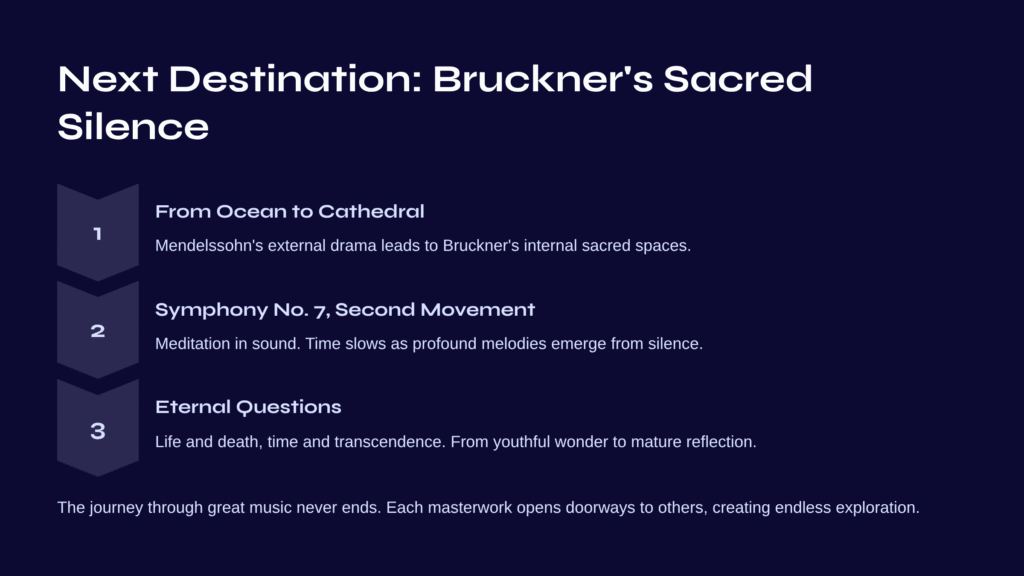
Next Destination: Bruckner’s Sacred Silence
If you’ve found yourself moved by this oceanic journey, perhaps you’re ready for a very different kind of travel. Anton Bruckner’s Symphony No. 7, second movement, offers passage into an entirely different realm of experience.
Where Mendelssohn drew inspiration from nature’s external drama, Bruckner explored the cathedral spaces of the human soul. This slow movement unfolds like a meditation in sound, time seeming to slow as profound melodies emerge from depths of orchestral silence. Composed partly as a lament for Wagner’s death, it’s music that contemplates the eternal questions: life and death, time and transcendence, the fleeting and the permanent.
From the restless energy of Scottish seas to the vast stillness of Austrian mountains, from youthful wonder to mature reflection. Bruckner’s world awaits—deeper, more mystical, no less beautiful than the waves we’ve just left behind.
The journey through great music is never really complete, is it? Each masterwork opens doorways to others, creating an endless exploration of human experience transformed into sound. Let the waves of Mendelssohn carry you toward new shores of discovery.
